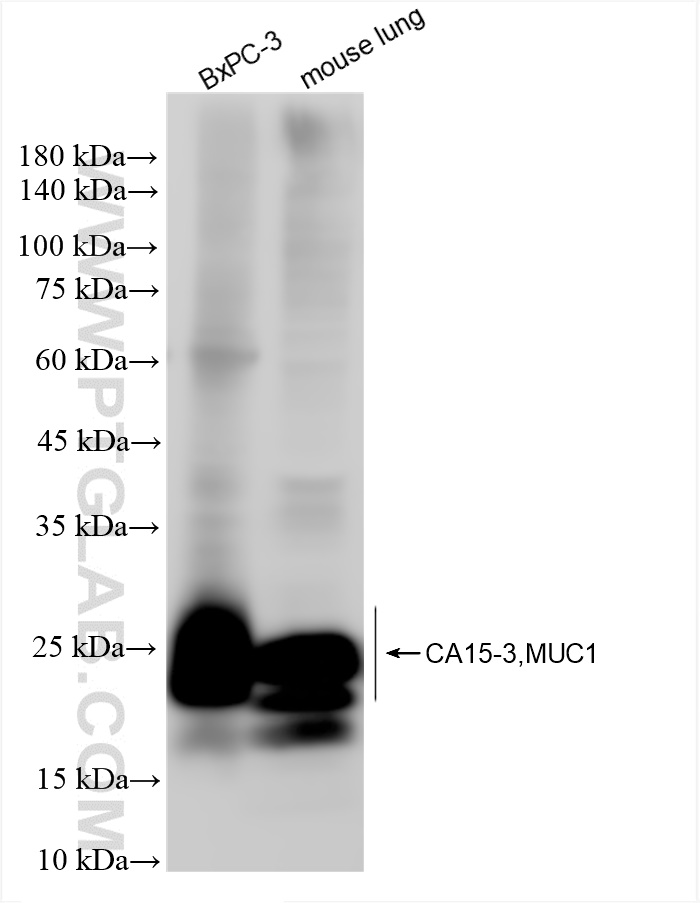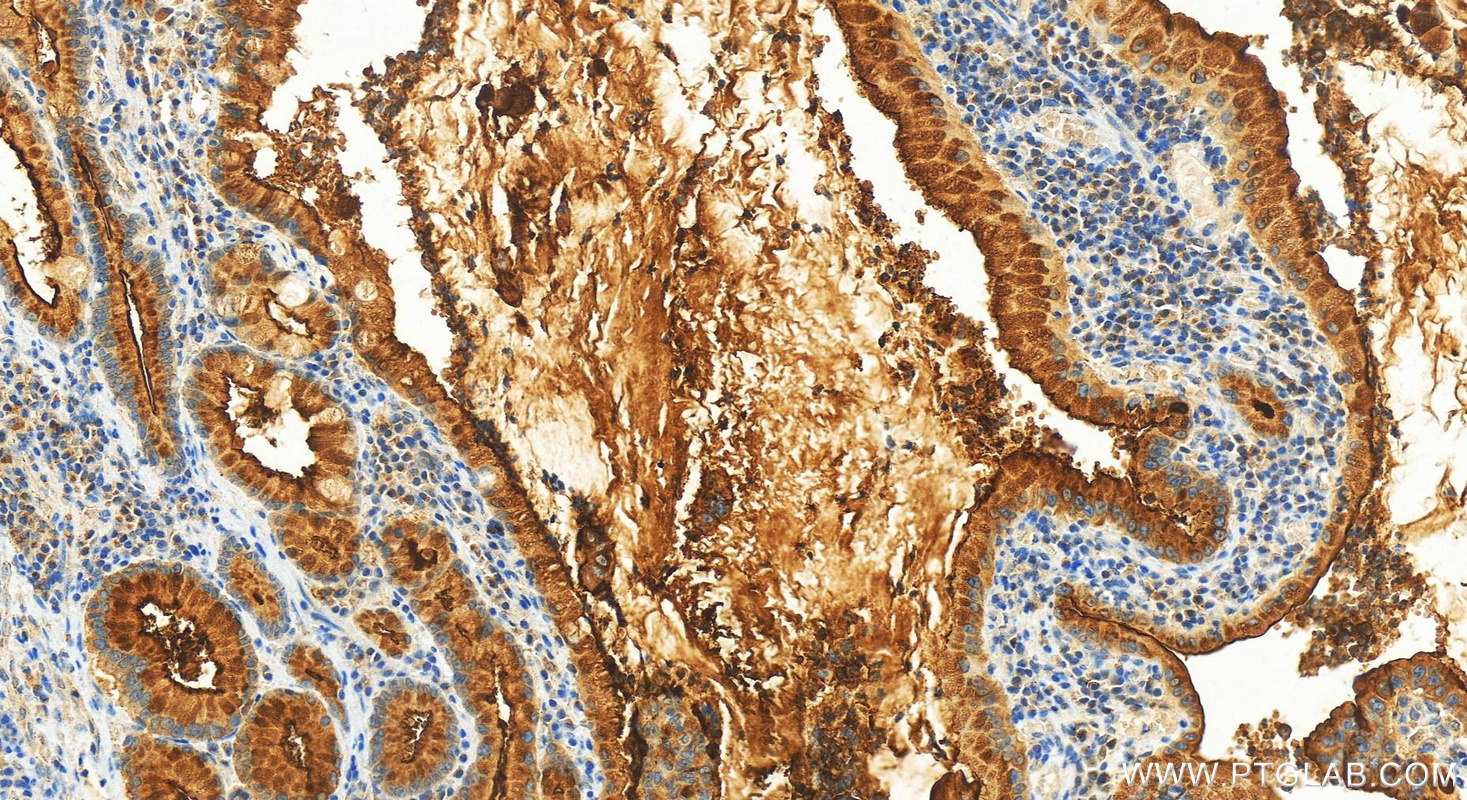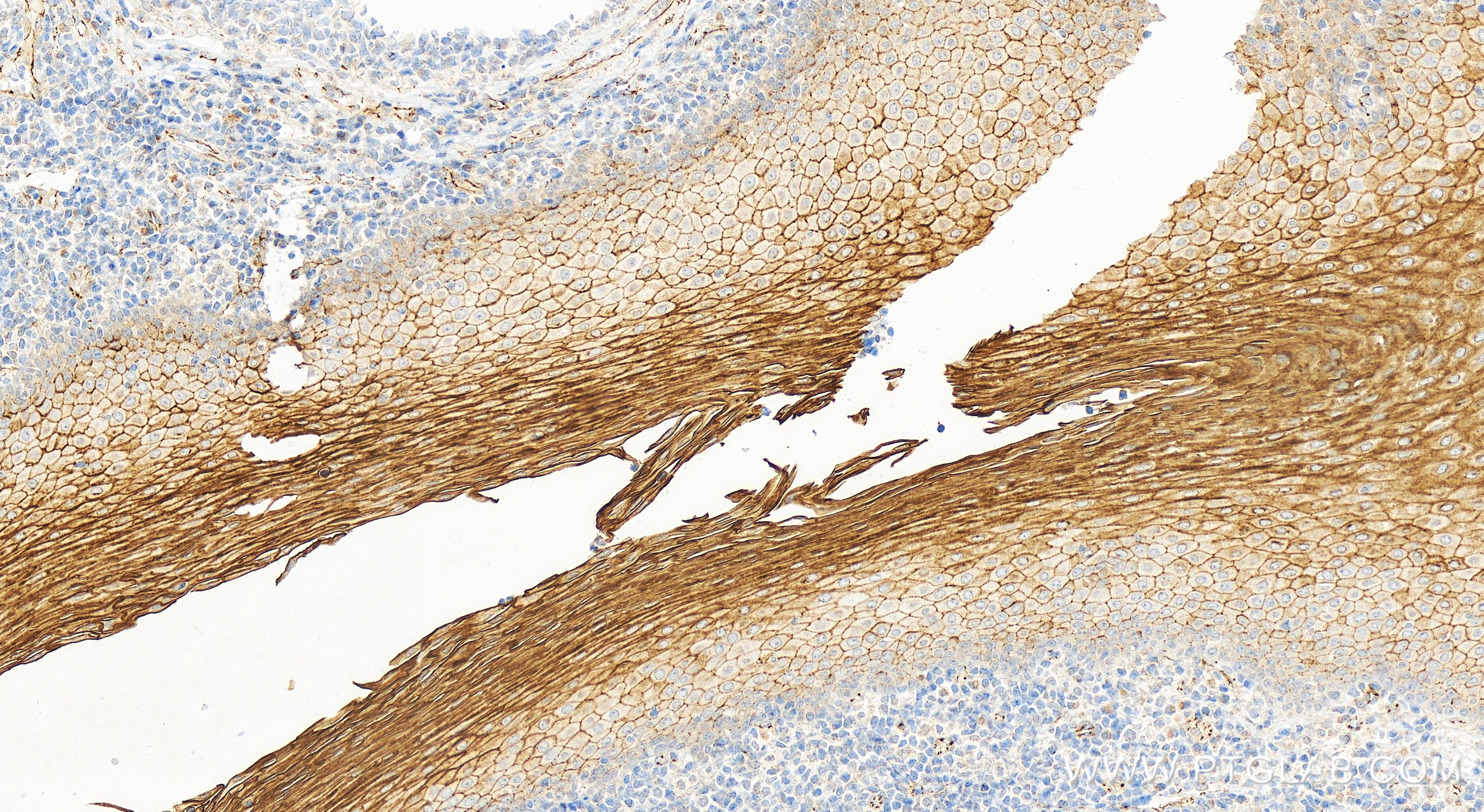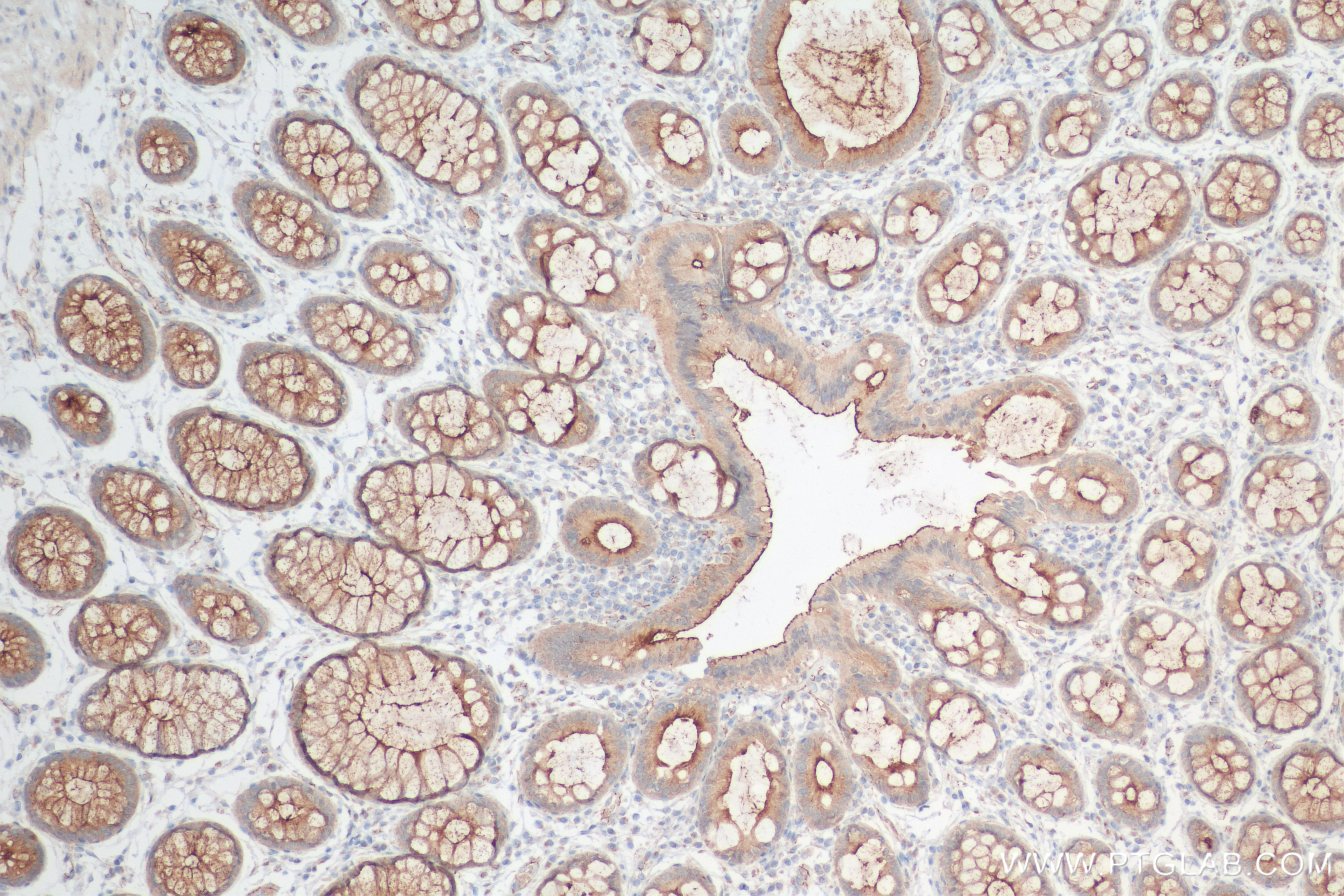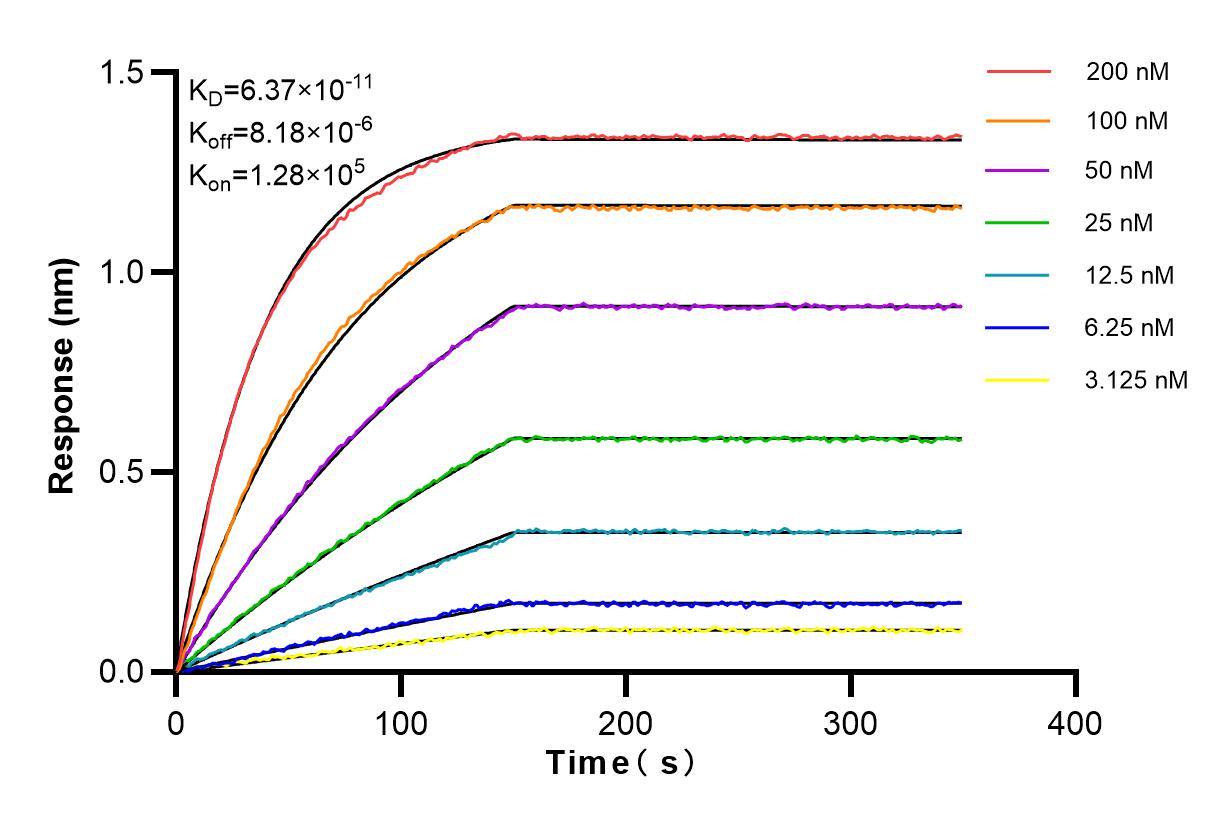验证数据展示
产品信息
83311-4-PBS targets MUC1/CA15-3 C-terminal in WB, IHC, ELISA applications and shows reactivity with human, mouse samples.
| Tested Applications | WB, IHC, ELISA Application Description |
| Tested Reactivity | human, mouse |
| Immunogen | MUC1/CA15-3 C-terminal fusion protein Ag20366 种属同源性预测 |
| Host / Isotype | Rabbit / IgG |
| Class | Recombinant |
| Type | Antibody |
| Full Name | mucin 1, cell surface associated |
| Synonyms | CA15-3,MUC1, CA15-3, CA153, MUC1, CA15 3 |
| Calculated Molecular Weight | 1264 aa, 123 kDa |
| Observed Molecular Weight | 23-30 kDa |
| GenBank Accession Number | BC120975 |
| Gene Symbol | MUC1/CA15-3 |
| Gene ID (NCBI) | 4582 |
| Conjugate | Unconjugated |
| Form | Liquid |
| Purification Method | Protein A purfication |
| UNIPROT ID | P15941 |
| Storage Buffer | PBS Only |
| Storage Conditions | Store at -80°C. The product is shipped with ice packs. Upon receipt, store it immediately at -80°C |
背景介绍
MUC1 is a type I transmembrane glycoprotein expressed by various epithelial cells of the female reproductive tract, lung, breast, kidney, stomach, and pancreas. MUC1 is transcribed as a large precursor gene product, and upon translation, is cleaved in the endoplasmic reticulum, yielding two subunits: the large extracellular N-terminal subunit (MUC1-N, about 120-200 kDa) and the small cytoplasmic C-terminal subunit (MUC1-C, about 23-30 kDa). Among the known mucins, MUC1 is best studied and plays crucial roles in regulating many cellular properties, including cell proliferation, apoptosis, adhesion, and invasion. MUC1 is overexpressed in a wide range of human epithelial malignancies. This antibody was raised against the C-terminal region of human MUC1, thus it recognizes the 23-30 kDa cytoplasmic MUC1.
